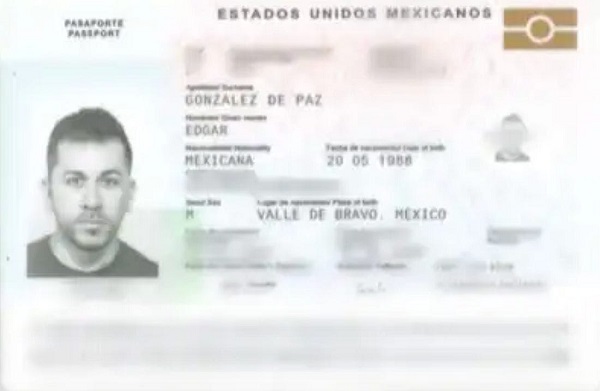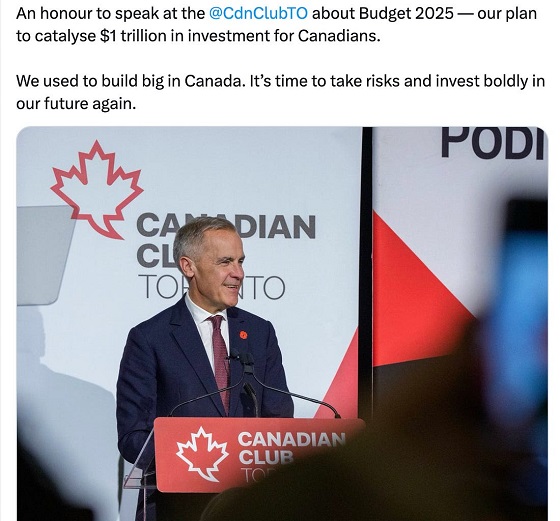Frontier Centre for Public Policy
The Great Canadian Hoax exposed

From the Frontier Centre for Public Policy
Grave Error: How The Media Misled Us (and the Truth about Residential Schools) edited by C.P. Champion and Tom Flanagan, Truth North and Dorchester Review, 343pp, $21.99) is a companion volume to Frontier’s From Truth Comes Reconciliation, which was published in 2021 (second edition is forthcoming). The two reviews published here are by Colin Alexander and Peter Best. The book demonstrates that there is no forensic evidence of Indian Residential School children that have been murdered and buried in residential school yards. There are a number of reasons for not believing the claim that children were murdered in these schools. Canadians are anxious to know the truth about the schools, and this book along with Frontier’s book go a long way to dispel the myths that have developed about the murder of residential school children. The book has been a top seller on Amazon since it was published in early January 2024.
This scholarly book of essays demolishes the narrative that any children went missing from Indian residential schools (IRS), let alone thousands, or that there are mass graves. Grave Error, in fact, debunks what essayist Jonathan Kay calls “a media-fuelled social panic over unmarked graves.” Mainstream media around the world—not just in Canada—ran with this press release issued on May 27, 2021:
This past weekend, with the help of a ground penetrating radar [GPR] specialist, the stark truth of the preliminary findings became known – the confirmation of the remains of 215 children who were students at the Kamloops Indian Residential School [KRS]. …
To our knowledge, these missing children are undocumented deaths,” stated Kukpi7 Rosanne Casimir. “Some were as young as three years old. …
Mainstream news media and politicians took the press release to heart, with Prime Minister Justin Trudeau lowering flags on federal buildings to half-mast for six long months. So debauched have the Enlightenment’s principles of inquiry become, along with those of responsible journalism, that it took outsiders to question the truth of this release.

Yes, Ground Penetrating Radar (GPR) found disturbed ground in the orchard near the school. That is because the land had buried drainage tiles from a septic system that had been installed in 1924. In any case, except for orphans and those whose upbringing was beyond their parents’ capacity, the IRS required a minimum age of six for admission.
No children were murdered and buried surreptitiously at night. Schools were paid on a headcount of children, so there was not a single name unaccounted for. There is a death certificate for every death, with burials either in the nearby cemetery or returned to their reserves. TB and other communicable diseases rampant everywhere caused most IRS deaths a century ago. Since the introduction of antibiotics, the death toll has been much lower. Many graves in recognized cemeteries are unmarked because the customarily used wooden crosses deteriorated over time. Despite that, in December 2021, Canadian Press called unmarked graves the story of the year!
Len Marchand’s autobiography, Breaking the Trail, provides an antidote for the horror stories at KRS. A former attendee during the time of the alleged murders and burials, he became Canada’s first Indigenous cabinet minister. The worst he says of his time there was that meals included mushy potatoes.
Essayist Ian Gentles says the juggernaut of misinformation began with the CBC program The Journal on October 30, 1990. Interviewed by Barbara Frum, Grand Chief of the Assembly of First Nations, Phil Fontaine, said he had been physically and sexually abused at his school. This led to a tsunami of former IRS attendees asserting similar allegations. Unfortunately, Ms. Frum did not ask who perpetrated the abuse, whether staff or fellow students. Or why he did not make a complaint to the police. I emailed Mr. Fontaine asking those questions but without receiving an answer.
Some essayists accept the proposition that there were real atrocities. I am not sure they were widespread. There were only a few successful prosecutions reported by the Truth and Reconciliation Commission. There are probably some abuses at boarding schools. Was it really an atrocity to cut an IRS attendee’s hair on arrival or to exchange a uniform for an orange shirt? Essayist and former staff member at Stringer Hall in Inuvik, Rodney Clifton, has described children on their return after the summer break with their families. They were often in poor physical condition, and some were still wearing the clothing, unwashed in the meantime, that they left the school with.
Essayist Tom Flanagan scores a bull’s-eye when quoting John Ioannidis, medical researcher at Stanford University: “The greater the financial and other interests and prejudices in a scientific field, the less likely the research findings are to be true.” With money almost unlimited for Indigenous issues, a multi-billion-dollar industry has grown out of pleading for money and telling Indigenous youth to feel sorry for themselves. By extension, the industry has prospered from laying guilt on schoolchildren and taxpayers. As shown in Lonely Death of an Ojibwa Boy by Robert MacBain, that includes what I construe to be a fraud, the Gord Downie and Chanie Wenjack charity.
I also disagree with essayists saying the Indigenous were dealt a bad hand, let alone that they need new treaties. What about the previously downtrodden Asian Canadians who have surpassed their white counterparts in incomes? Yes, Canada welcomed Indians into the armed forces for the Boer Wars and the two World Wars, only to treat them like dirt when the wars ended. But today there has been a role-reversal. Now Indigenous leaders can say whatever they want, and no one calls them out on saying outrageous things.
To me, the failure of Canada’s Indigenous policy derives from the excesses of the welfare state which, since the demise of the fur trade, destroyed self-reliance and work ethic—Indigenous cultures were destroyed, if you will. Now Canadians kowtow to demands for renewed tribalism and self-determination resembling South Africa’s apartheid. That would give leaders prestige and money for doing little. For followers, it connotes marginalization and second-class citizenship. No one is considering the needs of next generations living in violence-wracked settlements having no economic reason to exist, and in urban slums. It eludes notice that those who are educated and skilled and engaged in or preparing for rewarding employment seldom become addicts or commit suicide, and they seldom go to jail.
The billions paid out for the IRS and mass graves hoaxes are not delivering acceptable housing or any other help that works. I know an unemployed and all but unemployable Inuk who got a cheque for $95,000 in April 2023. By July he had blown it all and was again scrounging for cigarettes. Many billions add to GDP and salve a nation’s conscience. But enriching prostitutes and drug dealers does not address real needs.
That said, there are templates, notably in Asia, for raising Third World peoples into the First World in a single generation. I recommend Grave Error as a starting point for radically different thinking about what needs to be done to help Indigenous Canadians succeed in our country.
Colin Alexander was publisher of the Yellowknife News of the North for many years, and the advisor on education for Ontario’s Royal Commission on the Northern Environment. His latest book is Justice on Trial: Jordan Peterson’s case and others show we need to fix a broken legal system.
Agriculture
Farmers Take The Hit While Biofuel Companies Cash In

From the Frontier Centre for Public Policy
Canada’s emissions policy rewards biofuels but punishes the people who grow our food
In the global rush to decarbonize, agriculture faces a contradictory narrative: livestock emissions are condemned as climate threats, while the same crops turned into biofuels are praised as green solutions argues senior fellow Dr. Joseph Fournier. This double standard ignores the natural carbon cycle and the fossil-fuel foundations of modern farming, penalizing food producers while rewarding biofuel makers through skewed carbon accounting and misguided policy incentives.
In the rush to decarbonize our world, agriculture finds itself caught in a bizarre contradiction.
Policymakers and environmental advocates decry methane and carbon dioxide emissions from livestock digestion, respiration and manure decay, labelling them urgent climate threats. Yet they celebrate the same corn and canola crops when diverted to ethanol and biodiesel as heroic offsets against fossil fuels.
Biofuels are good, but food is bad.
This double standard isn’t just inconsistent—it backfires. It ignores the full life cycle of the agricultural sector’s methane and carbon dioxide emissions and the historical reality that modern farming’s productivity owes its existence to hydrocarbons. It’s time to confront these hypocrisies head-on, or we risk chasing illusory credits while penalizing the very system that feeds us.
Let’s take Canada as an example.
It’s estimated that our agriculture sector emits 69 megatonnes (Mt) of carbon dioxide equivalent (CO2e) annually, or 10 per cent of national totals. Around 35 Mt comes from livestock digestion and respiration, including methane produced during digestion and carbon dioxide released through breathing. Manure composting adds another 12 Mt through methane and nitrous oxide.
Even crop residue decomposition is counted in emissions estimates.
Animal digestion and respiration, including burping and flatulence, and the composting of their waste are treated as industrial-scale pollutants.
These aren’t fossil emissions—they’re part of the natural carbon cycle, where last year’s stover or straw returns to the atmosphere after feeding soil life. Yet under United Nations Intergovernmental Panel on Climate Change (IPCC) guidelines adopted by Canada, they’re lumped into “agricultural sources,” making farmers look like climate offenders for doing their job.
Ironically, only 21 per cent—about 14 Mt—of the sector’s emissions come from actual fossil fuel use on the farm.
This inconsistency becomes even more apparent in the case of biofuels.
Feed the corn to cows, and its digestive gases count as a planetary liability. Turn it into ethanol, and suddenly it’s an offset.
Canada’s Clean Fuel Regulations (CFR) mandate a 15 per cent CO2e intensity drop by 2030 using biofuels. In this program, biofuel producers earn offset credits per litre, which become a major part of their revenue, alongside fuel sales.
Critics argue the CFR is essentially a second carbon tax, expected to add up to 17 cents per litre at the pump by 2030, with no consumer rebate this time.
But here’s the rub: crop residue emits carbon dioxide, methane and nitrous oxide whether the grain goes to fuel or food.
Diverting crops to biofuels doesn’t erase these emissions: it just shifts the accounting, rewarding biofuel producers with credits while farmers and ranchers take the emissions hit.
These aren’t theoretical concerns: they’re baked into policy.
If ethanol and biodiesel truly offset emissions, why penalize the same crops when used to feed livestock?
And why penalize farmers for crop residue decomposition while ignoring the emissions from rotting leaves, trees and grass in nature?
This contradiction stems from flawed assumptions and bad math.
Fossil fuels are often blamed, while the agricultural sector’s natural carbon loop is treated like a threat. Policy seems more interested in pinning blame than in understanding how food systems actually work.
This disconnect isn’t new—it’s embedded in the history of agriculture.
Since the Industrial Revolution, mechanization and hydrocarbons have driven abundance. The seed drill and reaper slashed labour needs. Tractors replaced horses, boosting output and reducing the workforce.
Yields exploded with synthetic fertilizers produced from methane and other hydrocarbons.
For every farm worker replaced, a barrel of oil stepped in.
A single modern tractor holds the energy equivalent of 50 to 100 barrels of oil, powering ploughing, planting and harvesting that once relied on sweat and oxen.
We’ve traded human labour for hydrocarbons, feeding billions in the process.
Biofuel offsets claim to reduce this dependence. But by subsidizing crop diversion, they deepen it; more corn for ethanol means more diesel for tractors.
It’s a policy trap: vilify farmers to fund green incentives, all while ignoring the fact that oil props up the table we eat from.
Policymakers must scrap the double standards, adopt full-cycle biogenic accounting, and invest in truly regenerative technologies or lift the emissions burden off farmers entirely.
Dr. Joseph Fournier is a senior fellow at the Frontier Centre for Public Policy. An accomplished scientist and former energy executive, he holds graduate training in chemical physics and has written more than 100 articles on energy, environment and climate science.
Frontier Centre for Public Policy
Notwithstanding Clause Is Democracy’s Last Line Of Defence

From the Frontier Centre for Public Policy
Amid radical rulings like Cowichan, Section 33 remains a vital tool for protecting property rights, social and economic stability, and legislative sovereignty in Canada.
The Notwithstanding Clause reminds Canadians that voters, not judges, make the final call
Alberta Premier Danielle Smith recently invoked Section 33 of the Charter of Rights and Freedoms to end a teachers’ strike and prevent endless litigation. The Alberta Teachers’ Association and the provincial NDP have called it tyranny. But a government using lawful authority is not tyranny.
Section 33, known as the “Notwithstanding Clause,” is a constitutional safeguard. It allows legislatures to pass laws that override certain Charter rights for up to five years. It was built into the Charter deliberately to ensure that elected representatives, not judges, remain supreme on fundamental issues.
The modern Left despises this clause because it breaks their playbook. When they cannot win in Parliament, they turn to the courts. For 50 years, judges have helped them shift policy by interpreting rights creatively. Section 33 blocks that route. That is why they hate it.
They smear it as a tool of the far right. The facts say otherwise. Allan Blakeney, the Saskatchewan NDP premier, helped enshrine it in 1982. The Parti Québécois, under René Lévesque, at the time the most leftist government in Canada, made heavy use of it. They understood something their successors pretend to forget: democracy rests with voters, not with the judiciary, with all due respect to the judiciary.
Blakeney and Alberta’s Peter Lougheed saw the danger. Federally appointed judges, immune from electoral consequence, could render decisions that uproot regional jurisdiction. Section 33 was the firewall. It recognized that while courts serve justice, legislatures serve people.
Two recent rulings show why that firewall matters. First, the Supreme Court struck down mandatory minimum sentences for child pornography in a 5-4 ruling.
Weeks earlier, in August 2025, Justice Barbara Young of the B.C. Supreme Court ruled that the Cowichan Tribes held unextinguished Aboriginal title to nearly 2,000 acres in Richmond, B.C. That land includes homes, businesses, public utilities and Crown land. The court declared Indigenous title overrides existing property rights, even without treaties or compensation.
The ruling makes every deed in that area, many of which were granted by the Crown over a century ago, subject to Justice Young’s retroactive reinterpretation. Your mortgage may rest on land you no longer legally own. Your lease may be invalid. Your development project unsellable. This is not a theory. It is a ruling.
No economy can function under such uncertainty. Property rights are foundational to free markets. If land ownership depends on a judge’s view of historical use, markets freeze. Banks will not lend. Builders will not build. The Cowichan decision casts a shadow over every titled parcel in British Columbia. Its precedent will not stay local.
B.C. Premier David Eby has chosen to appeal but that will take years. Meanwhile, risk deepens. Capital flees from uncertainty. No investor waits patiently while the Supreme Court ponders first principles.
This is the moment Section 33 was designed for. Its use would freeze the legal effect of Cowichan while legislatures restore order. If the prime minister will not act, others must. Premiers should signal now that property rights will be upheld. If not, the chaos of one courtroom may become a national affliction.
The Cowichan ruling, for all its disruption, may be a clarifying gift. It shows Canadians what radical judicial overreach looks like. Even those who trust the courts may now see why elected governments need the power to say: enough.
Blakeney put it plainly: “What matters is who makes the choices. I would be happy if legislatures gave courts all the deference, as long as legislatures were free to make the major governmental decisions.”
That freedom must now be used. Section 33 is not an act of aggression. It is the return of decision-making to where it belongs. In the aftermath of Cowichan, the country cannot wait years while property confidence erodes.
Section 33 is the remedy.
Marco Navarro-Genie is vice-president of research at the Frontier Centre for Public Policy and co-author, with Barry Cooper, of Canada’s COVID: The Story of a Pandemic Moral Panic (2023).
-

 espionage2 days ago
espionage2 days agoChinese-Owned Trailer Park Beside U.S. Stealth Bomber Base Linked to Alleged Vancouver Repression Case
-

 Daily Caller2 days ago
Daily Caller2 days agoUS Nuclear Bomber Fleet Shares Fence With Trailer Park Linked To Chinese Intel-Tied Fraudster
-

 Daily Caller2 days ago
Daily Caller2 days agoLaura Ingraham Presses Trump On Allowing Flood Of Chinese Students Into US
-

 Crime14 hours ago
Crime14 hours agoCBSA Bust Uncovers Mexican Cartel Network in Montreal High-Rise, Moving Hundreds Across Canada-U.S. Border
-

 Business2 days ago
Business2 days agoCarney’s Floor-Crossing Campaign. A Media-Staged Bid for Majority Rule That Erodes Democracy While Beijing Hovers
-

 Agriculture2 days ago
Agriculture2 days agoFarmers Take The Hit While Biofuel Companies Cash In
-

 Environment15 hours ago
Environment15 hours agoThe Myths We’re Told About Climate Change | Michael Shellenberger
-

 Frontier Centre for Public Policy2 days ago
Frontier Centre for Public Policy2 days agoNotwithstanding Clause Is Democracy’s Last Line Of Defence





